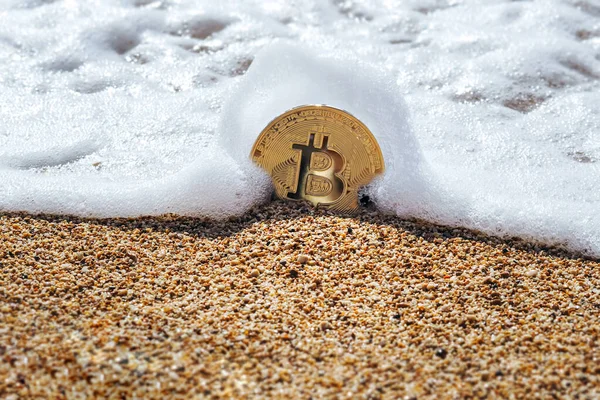Seamanship in the Digital Age: How Bitcoin Quietly Streamlines Modern Yachting
Yachting is equal parts romance and logistics. You fall for the wind, the horizon, the hush of a good anchorage—and then you meet reality: deposits, marina invoices, crew advances, provisioning, and a half-dozen vendors scattered across currencies and time zones. In this increasingly digital scene, Bitcoin has become a surprisingly useful tool for owners, skippers, and charterers who want fast, portable payments and tidy records. This article explains where BTC helps (and where it doesn’t), how to set up a safe workflow, and what a modern yacht team should know before casting off.
Why BTC Has a Place On Board
- Speed and predictability: When you’re moving between countries or booking a last-minute berth, waiting days for a bank transfer can sink the plan. A BTC transfer typically confirms in minutes, so operations don’t stall while funds float in limbo.
- Cross-border simplicity: Charter companies, marinas, and outfitters increasingly accept crypto or work with partners who do. Sending one asset from a single wallet can be cleaner than juggling multiple banking portals and exchange fees.
- Budget discipline: A dedicated BTC “voyage wallet” separates trip funds from personal accounts. Think of it as a sealed envelope for the season.
Use Cases That Actually Make Sense
| Scenario | How BTC Helps | What to Watch |
|---|---|---|
| Charter deposits & balances | Fast settlement and clear receipts when timelines are tight | Confirm the operator’s wallet details and refund policy in writing |
| Marina & shipyard invoices | Cross-border payments without currency gymnastics | Double-check the network (BTC mainnet) and any service fees |
| Crew advances & tips | Send small, trackable amounts instantly—even at sea with satellite data | Agree on wallet apps, backup practices, and who keeps transaction logs |
| Provisioning & spares | Pay international suppliers quickly to lock inventory or delivery slots | Keep screenshots of quotes and TXIDs for warranty and customs |
A Clean “BTC for Yachting” Workflow
- Decide your float. Estimate a voyage wallet for variable costs (fuel, berths, unexpected repairs). This is travel cash, not an investment.
- Acquire BTC the simple way. Use a reputable exchange aggregator that compares partner offers and guides you through a step-by-step checkout so you can purchase BTC with a card or bank payment and receive it at your own wallet. If you need a straightforward option, start with this service and pick the route that fits your timing and rate preference.
- Move funds to a dedicated wallet. Create a voyage wallet separate from long-term holdings. Label it by season or boat name for easy accounting.
- Pay vendors deliberately. For large payments, send a small test first; verify the receiving address via a second channel (phone/email on letterhead).
- Log everything. Keep TXIDs, amounts, and PDFs of quotes/invoices in a shared folder accessible to the captain and purser.
Risk & Reality Check
Bitcoin isn’t magic; it’s plumbing. Price moves can be sharp, so treat your voyage wallet like petty cash: only load what you plan to spend, keep a tiny buffer for fees, and top up as needed. For refunds and disputes, documents win: insist on written terms for cancellations, partial deliveries, and change orders. Finally, confirm who on the team can initiate payments, who verifies addresses on a trusted device, and how backups are stored (paper recovery phrases in sealed envelopes, never in photos or cloud notes).
Security Habits That Belong on Every Boat
- Device hygiene: Use a “clean” phone or tablet for the voyage wallet—no random browser extensions or unknown Wi-Fi logins.
- Two-person rule: For transfers above a set threshold, one person prepares the payment and another verifies the amount and address on-device.
- Small test first: For anything new (a marina you’ve never paid, a shipyard contact), send a nominal amount and confirm receipt before the balance.
- Paper trail: Save confirmations offline; satellite internet can be patchy when you need proof.
When BTC Is Not the Right Tool
If a vendor doesn’t provide clear wallet details or refuses to put terms in writing, don’t force crypto into the mix—use a traditional method with chargeback protections. Likewise, if a payment must be reversible by design (e.g., holding deposits with conditional release), a bank instrument may be wiser. Seamanship is about choosing the right line for the right job.
Gadgets & Apps That Pair Well With a Voyage Wallet
- Mobile wallet with address book: Reduces copy-paste errors for recurring vendors.
- Expense scanner: Snap paper invoices at the dock and match them to TXIDs later.
- Shared checklist app: Track who approved, who paid, and what remains outstanding.
Bottom Line
Great passages hinge on quiet systems: rigging you trust, engines that hum, and payments that don’t hold up the plan. Bitcoin won’t make a dull day at sea more exciting—that’s what dolphins and downwind legs are for—but it can make the business of yachting less fussy. Acquire BTC cleanly, separate trip funds from savings, keep impeccable records, and insist on clear terms. Do that, and your next cruise feels like it should: more horizon, less hold music.











